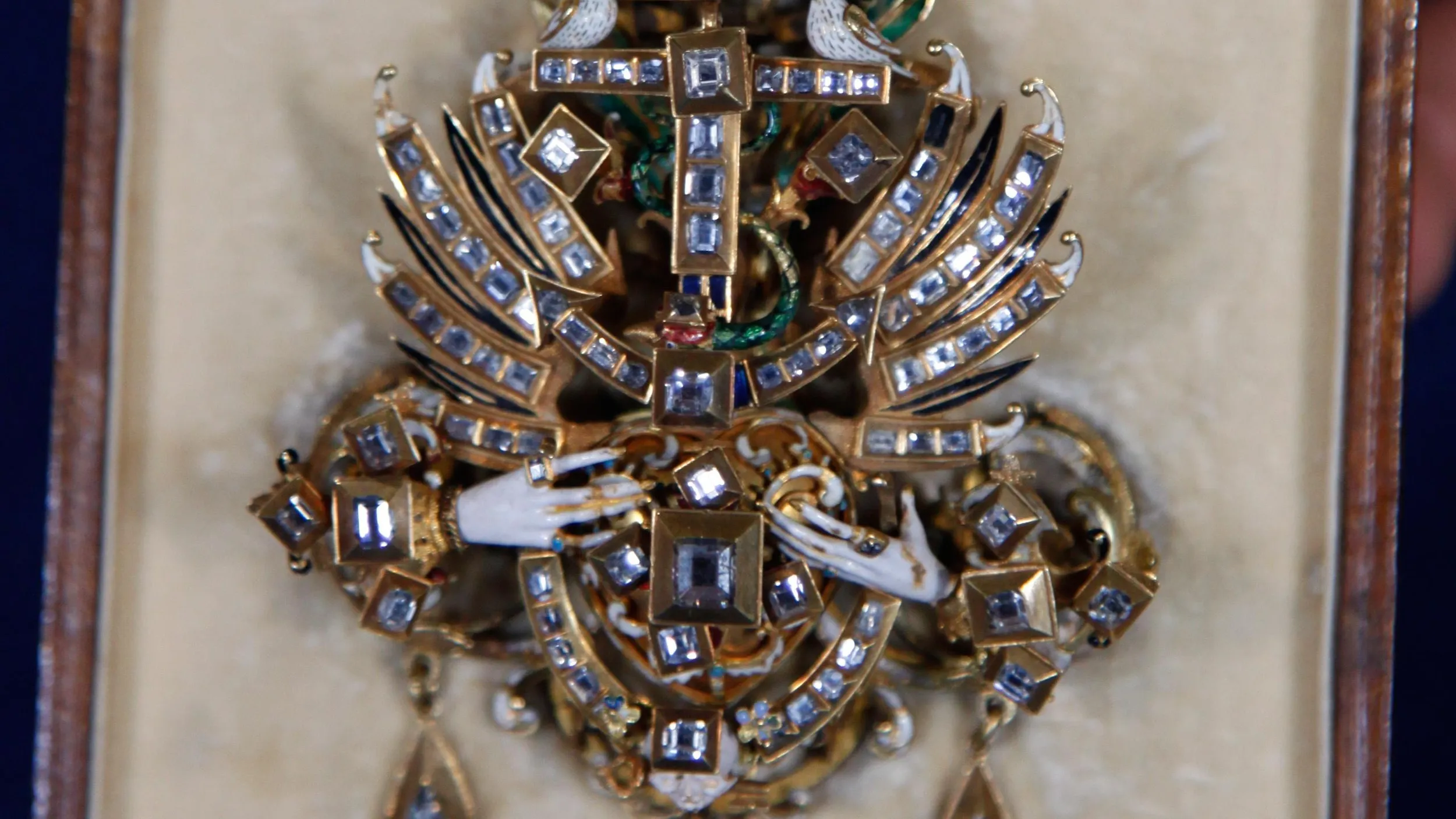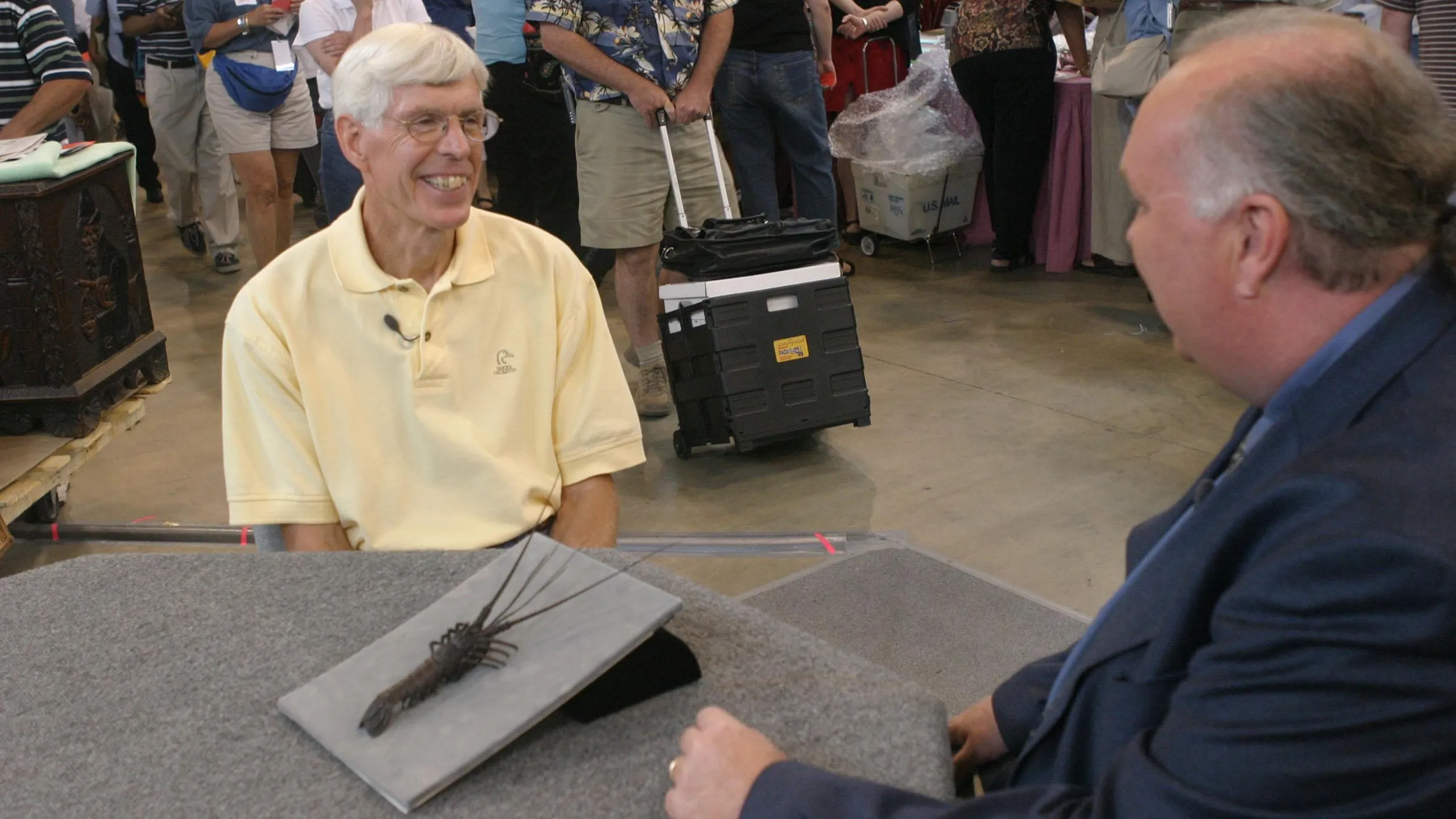GUEST: This painting came into the family through my husband's Aunt Miriam, who was a very wealthy lady who enjoyed the finer things in life. She traveled extensively around the world.
APPRAISER: Right.
GUEST: And this was one of her paintings. And when she passed away, it went into my husband's mother and father's house, where it stayed for a very long time.
APPRAISER: Right.
GUEST: And a couple of years ago, we talked my father-in-law into letting us keep it in our house.
APPRAISER: Uh-huh.
GUEST: And we know it's a Henry Woods, or we think so.
APPRAISER: Mm-hmm.
GUEST: And we also have a book that came from 1915, an art show of his work, and we saw that it has an actual photograph of that picture.
APPRAISER: I'm guessing about the family, but I suspect there may have been a smoker there.
GUEST: Right, see how it's so much brighter in here than it is over here. My husband's family smoked, heavily.
APPRAISER: Yeah, I would have to say I get the sense that this painting had a four-pack-a-day habit.
GUEST: Probably.
APPRAISER: And I'm surprised these poor girls aren't coughing. (laughs) The reason we can tell that, as you pointed out, we've got this wonderful little illustration. It's the same painting. But look at the difference. The light coming through the doorway, and up here-- really needs a clean.
GUEST: Yes.
APPRAISER: I'm always telling people to get their paintings cleaned, but we have the advantage of actually knowing what it originally looked like.
GUEST: Right.
APPRAISER: Now, you've the book about Henry Woods. What have you learned about him?
GUEST: What I've learned is that he was an English artist who fell in love with Venice and became famous for his Venetian scenes. And this painting is called "La Tombola," and it's a card game that they're playing called tombola. But basically, that's all I know.
APPRAISER: He was well known for depicting life in Venice. He moved there when he was about 30 years old. He was from Warrington, in England, where he studied art originally, before going on to the South Kensington Museum, which is now better known as the Victoria and Albert in London. But as you say, like many artists before and since, he was seduced by Venice and the whole lifestyle, and it's his Venice scenes that are most popular. But even while he was living there, he showed his work at the Royal Academy in London. So the work was sent back over there, and he was, in fact, a very prestigious member of the academy. And he was to live in Venice until his death in 1921.
GUEST: Oh, okay.
APPRAISER: This one, as we know from the book, dates from 1904.
GUEST: Yes.
APPRAISER: Now, he was also an illustrator early on, and I think we can see his skills as an illustrator coming out in this painting. Interestingly, he actually illustrated books for some of the well-known Victorian writers like Trollope and also Wilkie Collins.
GUEST: Hmm.
APPRAISER: And I think when you look at the detail in these faces, really marvelous detail.
GUEST: Oh, yeah.
APPRAISER: Which I assure you will come up even more when it's been cleaned. It's a really marvelous example of his work. Now, value-- any thoughts about that?
GUEST: I have absolutely no idea. I mean, I don't think that we've ever cleaned it because we didn't know if it was real.
APPRAISER: I think at auction, a painting of this caliber, by an artist as important as Henry Woods was, even without restoration, should easily fetch $30,000 to $50,000.
GUEST: Wow-- really?
APPRAISER: Yeah.
GUEST: Wow, that's great.












